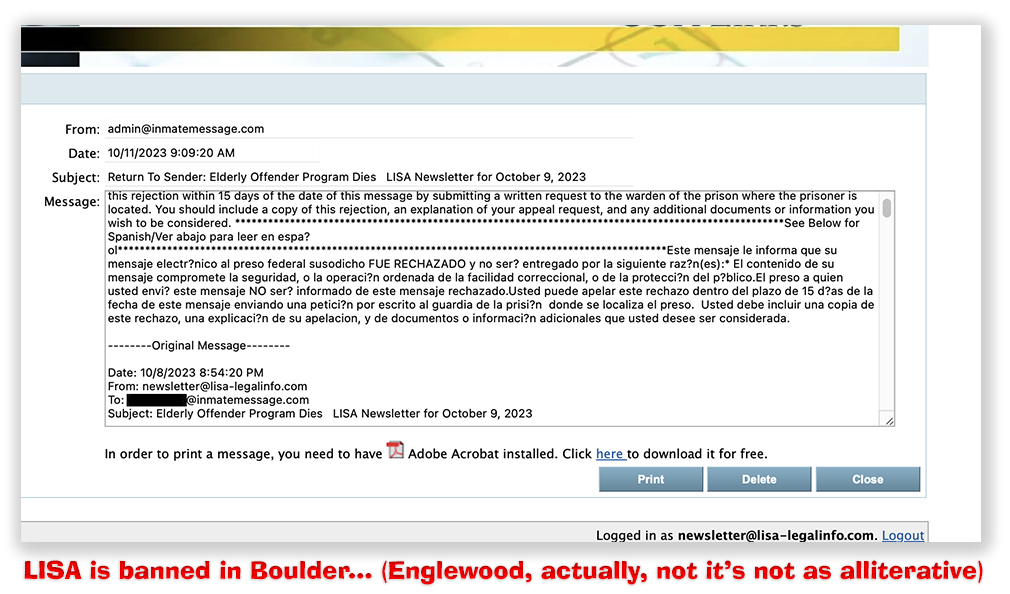We post news and comment on federal criminal justice issues, focused primarily on trial and post-conviction matters, legislative initiatives, and sentencing issues.

FIRST STEP ACT TURNS FIVE YEARS OLD
 The anniversary is still 63 days away, but a couple of early hagiographic articles on the First Step Act’s 5th birthday are already being posted.
The anniversary is still 63 days away, but a couple of early hagiographic articles on the First Step Act’s 5th birthday are already being posted.
The Crime Report said last week that First Step “now allows federal inmates to significantly reduce their actual penal custody time. That fits into the primary goal of The Act, which is to reduce recidivism among nonviolent offenders through greater emphasis on rehabilitation in the Bureau of Prisons.”
The philanthropy Arnold Ventures interviewed Colleen P. Eren, Ph.D., author of a new book, Reform Nation: The First Step Act and the Movement to End Mass Incarceration. She noted that “33,000 people have been released from federal prison so far under the First Step Act, according to FAMM. The recidivism rate for those people is 12.4% compared to a rate of around 43% for others exiting federal prison. The First Step Act made President Obama’s Fair Sentencing Act of 2010 retroactive, resulting in the release of around 4,000 people who were sitting in prison under the 1987 crack cocaine sentencing disparity. It also made it easier to get compassionate release, and a total of 4,500 people have been released under that change.”
 First Step was far from perfect, but Dr. Eren says that’s more of a feature than a bug. “The First Step Act is an example of people not letting the perfect be the enemy of the good. There were differences to negotiate between conservative reformists and progressive reformists. Conservatives think that the incarceration system went too far but that it’s not fundamentally flawed… Left-leaning organizations refused to give their support until sentencing reform was included, which was significant… The left had to accept the PATTERN risk assessment – They said it was racist, reinforced existing disparities, and didn’t go far enough toward ending mass incarceration. It was a classic reform-versus-revolution tension.”
First Step was far from perfect, but Dr. Eren says that’s more of a feature than a bug. “The First Step Act is an example of people not letting the perfect be the enemy of the good. There were differences to negotiate between conservative reformists and progressive reformists. Conservatives think that the incarceration system went too far but that it’s not fundamentally flawed… Left-leaning organizations refused to give their support until sentencing reform was included, which was significant… The left had to accept the PATTERN risk assessment – They said it was racist, reinforced existing disparities, and didn’t go far enough toward ending mass incarceration. It was a classic reform-versus-revolution tension.”
Five years into the Act, the BOP has yet to work out properly accounting for FSA credits and placing prisoners with credits in halfway house and home confinement appropriately. But as frustrating as the implementation of First Step has been, life before the Act passed was much bleaker.
The Crime Report, The First Step Act: A Five-Year Review and the Path Forward (October 10, 2023)
Arnold Ventures, Historic Bipartisan Justice Reform Turns Five (October 6, 2023)
Colleen Eren, Reform Nation: The First Step Act and the Movement to End Mass Incarceration (Stanford Univ Press, Sep 2023)
– Thomas L. Root
























